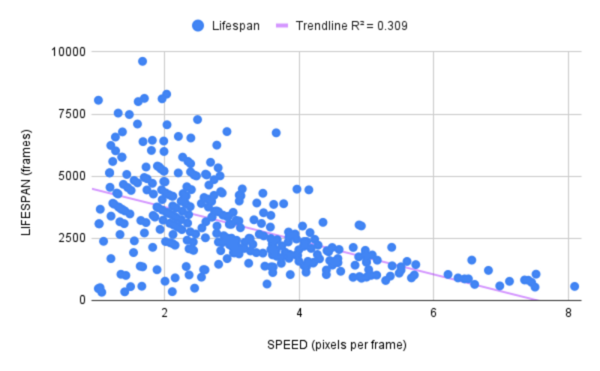Simulating natural selection via autonomous agents: Environmental factors create unstable equilibria
(1) Westwood High School, (2) CodeLathe Technologies
https://doi.org/10.59720/23-052
Natural selection is a vital process that forms the core of evolution of species. Through this process, advantageous traits of a species are passed down through generations, while disadvantageous traits tend to die off. In this study, we investigated the equilibria that the traits, speed and vision, approach as natural selection takes place. We aimed to test the hypothesis that there exists at least one equilibrium value for each of these traits that maximizes the lifespan of the species. We wanted to understand the extent to which natural selection can stabilize a particular trait for a species, and what factors influence this stabilization. It is already known that perfect stabilization in evolutionary games is not possible, but the mechanics of this destabilization have not been fully addressed from a biology standpoint. To address our hypothesis, we used a computer simulation to find relationships between various traits and their impacts on lifespan. We found that there are several confounding variables that influence the survivability of an organism other than the trait, such as the luck factor and the risk factor of a trait. We found that natural selection does not ever necessarily stop, because changes to the environment are continuously occurring, making it difficult or even impossible for equilibria to form. Our research demonstrated just how much natural selection is a continuous process rather than a predestined outcome as well as showed that further research must be conducted to explore these complex questions.
This article has been tagged with: